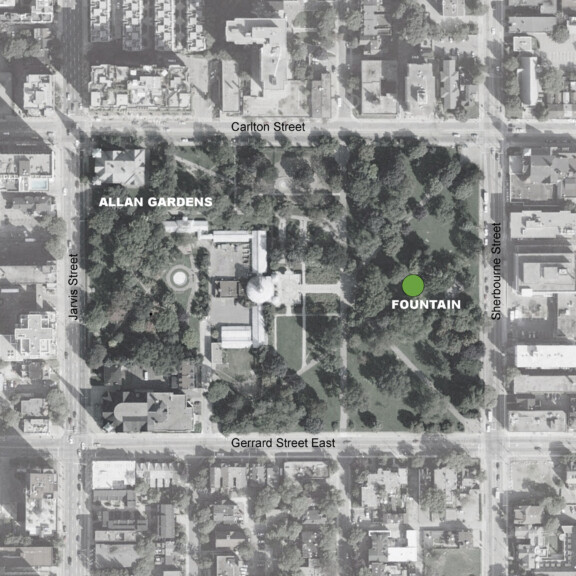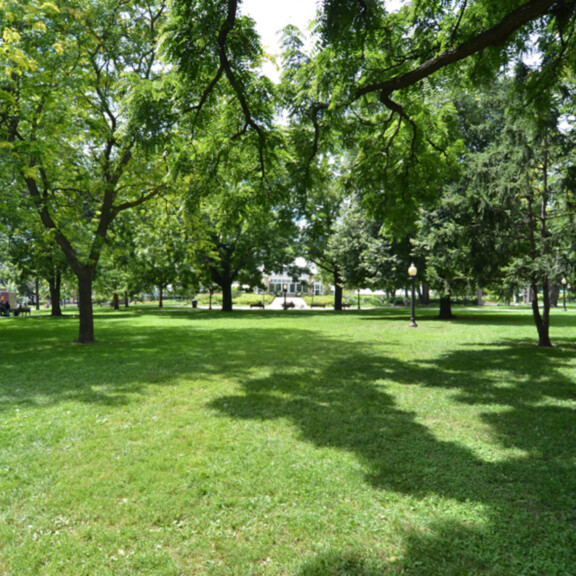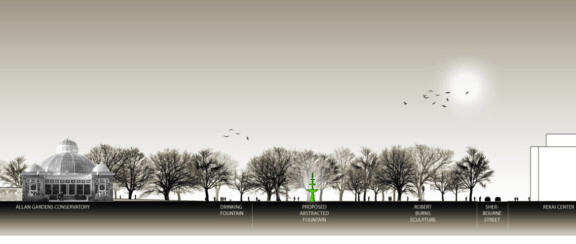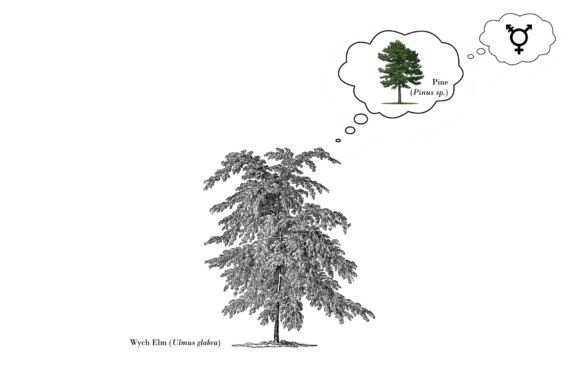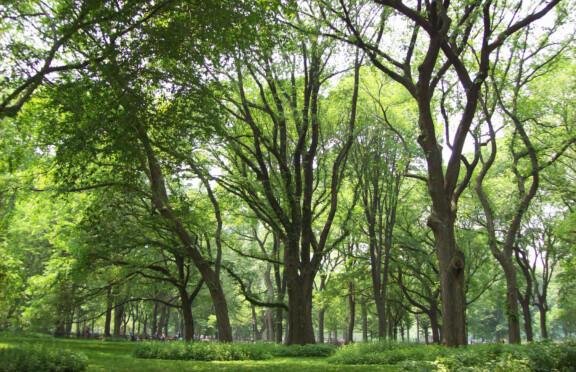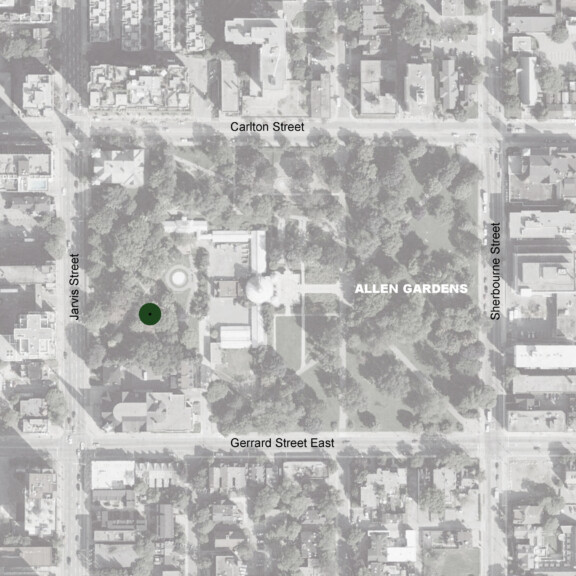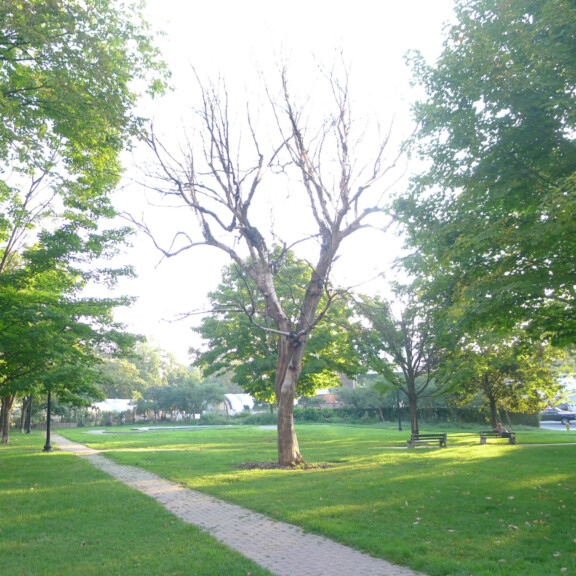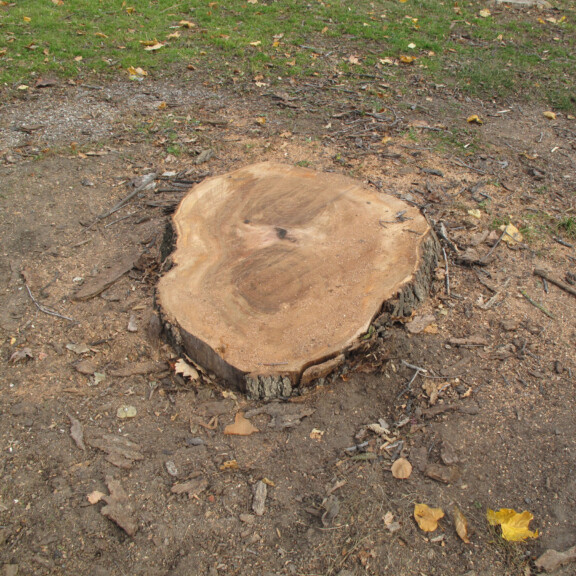Creating a spark to reignite a park
Green Fountain
With the aim of reversing the decline of Allan Gardens in Toronto and as a catalyst for renewed attention and affection for the park, the community group Friends of Allan Gardens established a plan for small pop-up interventions to refresh the park’s experience. In response, a conceptual idea was presented that symbolically resurrects the memory of the park’s former grandeur by invoking the presence of the cast iron Victorian fountain that used to mark the heart of Allan Gardens. Impressive still even as archived photos dating from the late 1800s, the new proposal calls for a temporary installation that would erect a freestanding silhouette profile of the original fountain. With memory tending to exaggerate reality, the sculpture will be larger than the original fountain, offset from its previous location and painted green. Green Fountain will become a mirage flanked by mature deciduous trees in summer that will also bring colour and contrast to animate the greys of winter.
The aim of this installation is to spark an appreciation for the park’s noble past, and manifest the public imagination towards a renewal of Allan Gardens which could possibly include the ultimate restoration of the original Victorian Fountain that, even today, continues to endure as an important symbol of the park.
Green Tree
A project inspired by dreams that come true, Green Tree was intended as the inaugural installation at Allan Gardens. Embodying the park’s demise was a Wych Elm that had been dead for over two years. Claude Cormier + Associés, responding to the sexual diversity of the surrounding neighbourhood, conceived of a ‘trans’ tree, transgressing the limits of species (instead of gender) to become a genre of ‘Wych Pine’, a deliberate evergreen.
Green plastic balls, colour-matched to the surrounding summer foliage, were to be used to saturate the entire tree branch structure and dissolve the lifeless tree into the surrounding leafy canopy. As the other trees changed into fall colours, the ‘Wych Pine’ would remain defiantly green throughout winter and into spring, when it would again disappear and become one with the other trees. During the following summer, the tree was to have been discretely replaced by an Eastern White Pine, marking the end of the transitioning process from an elm into a real evergreen.
Unfortunately, the tree designated and reserved for the installation was unexpectedly cut down shortly after the scheme was announced. The project died…

